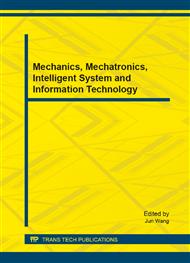[1]
I.E. Teltar, Capacity of multi-antenna Gaussian channels, European Trans. Tel., vol. 10, pp.585-595, Nov. /Dec. (1999).
DOI: 10.1002/ett.4460100604
Google Scholar
[2]
M. F. Pop and N. C. Beaulieu, Limitations of sum-of-sinusoids fading channel simulators, IEEE Trans. Commun., vol. 49, no. 4, pp.699-708, Apr. (2001).
DOI: 10.1109/26.917776
Google Scholar
[3]
A. S. Akki and F. Haber, A statistical model for mobile- to-mobile land communication channel, IEEE Trans. on Veh. Tech., vol. 35, pp.2-10, Feb. (1986).
DOI: 10.1109/t-vt.1986.24062
Google Scholar
[4]
A. S. Akki, Statistical properties of mobile-to-mobile land commu- nication channels, IEEE Trans. Veh. Technol., vol. 43, no. 4, p.826–831, Nov. (1994).
DOI: 10.1109/25.330143
Google Scholar
[5]
C. S. Patel, G. L. Stuber, and T. G. Pratt, Simulation of Rayleigh faded mobile-to-mobile communication channels, IEEE Trans. Commun., vol. 53, no. 10, pp.1876-1884, Oct. (2005).
DOI: 10.1109/tcomm.2005.858678
Google Scholar
[6]
C. S. Patel, G. L. Stuber, and T. G. Pratt, ``Statistical properties of amplify and forward relay fading channels, IEEE Trans. Veh. Technol., vol. 55, pp.1-9, Jan. (2006).
DOI: 10.1109/tvt.2005.861170
Google Scholar
[7]
R.H. Clarke, A Statistical Theory of Mobile Radio Reception, Bell. Syst. Tech. J., pp.957-1000, july (1968).
Google Scholar
[8]
G. L. stuber, Principles of Mobile Communication, 2 nd ed. Boston. MA: Kluwer, (2001).
Google Scholar
[9]
J. Wang, Fundamentals of erbium-doped fiber amplifiers arrays (Periodical style— Submitted for publication), IEEE J. Quantum Electron., submitted for publication.
Google Scholar
[10]
W.C. Jakes, Microwave Mobile Communications, Piscataway, NJ: IEEE Press, (1994).
Google Scholar
[11]
M. Patzold, Mobile Fading Channel. West Sussex, U. K: Wiley, (2002).
Google Scholar
[12]
M. D. Yacoub, J. E. Vargas B. and L. G. de R. Guedes, On higher order statistics of the Nakagami- distribution, IEEE Trans. Veh. Technol., vol. 48, pp.
DOI: 10.1109/25.764995
Google Scholar


